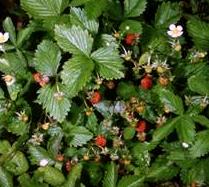Rye
Rye, cereal grain of the family Gramineae (grass family). The grain, Secale cereale, is important chiefly in Central and N Europe. It seems to have been domesticated later than wheat and other staple grains; cultivated rye is quite similar to the wild forms and no traces of it have been found among Egyptian ruins or Swiss lake dwellings. Where it grows well, wheat is preferred, but rye will produce a good crop on soil too poor or in a climate too cool to produce a good crop of wheat. The standard schwarzbrot, or pumpernickel, of Europe was formerly the major rye product. A bread of lighter color, called rye bread, is made of rye flour mixed with wheat flour. Today rye is used mostly as a stock feed (usually mixed with other grains), for hay and pasturage, for green manure, and as a cover crop. Russia leads in world production. Rye is much used as a distillers' grain in making whisky and gin. The tough straw of rye is valued for many purposes, e.g., thatching for roofs and stuffing ...








